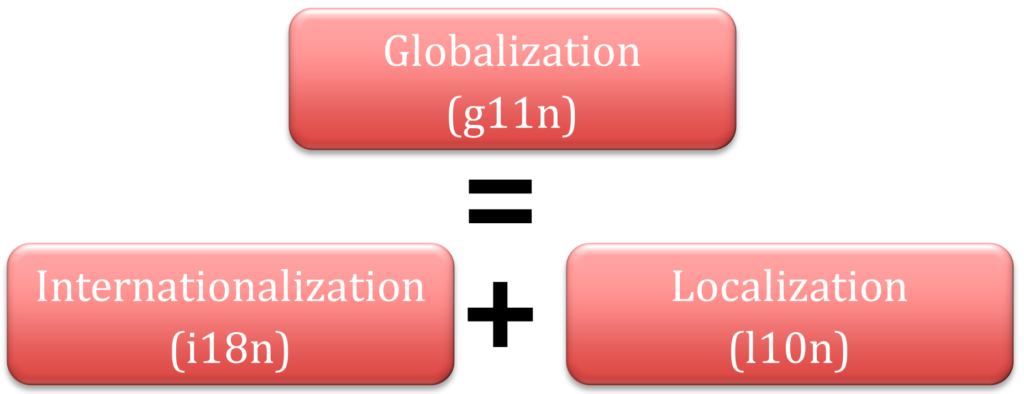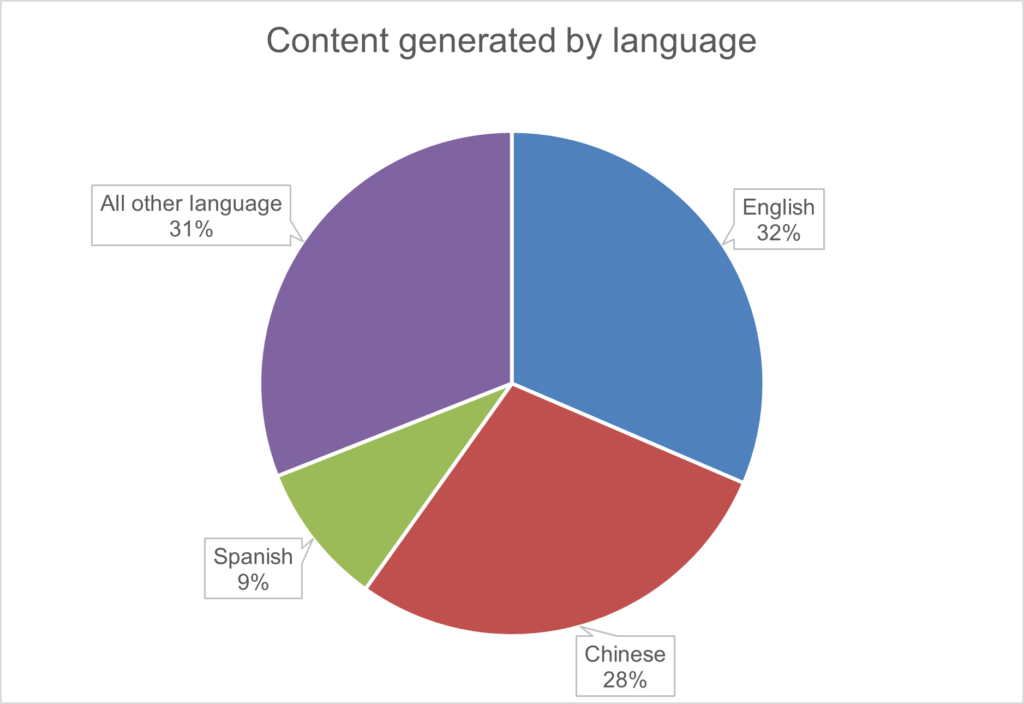Introduction
When you hear the word localization you may think of the more or less standard description that; “Localization is the adaptation of a product or service to meet the needs of a particular language, culture or locale.” And you would be correct of course, but that does not offer any real guidance on how to handle this sometimes-complex issue. Here we will explore what localization is, the reasons to localize.
There are essentially three things that we colloquially call localization, the first is sort of as a buzzword that really is globalization. Globalization refers to all of the activities that go into the planning and preparation of your product for the global market. Internationalization is all of the activities that are part of the globalization of your product and can include such things as data encoding, locale and culture awareness, date and time formatting, currency formatting, calendar differences, number formatting, addresses, paper size, text input, output and display, word direction, translation, testing and so on.
Localization is the specific activities undertaken after internationalization of the product, this includes the translation, review, localization testing, QA, DTP and so on. To use a military metaphor globalization is the strategy, internationalization are the tactics and localization is the soldier.

Why Localize
With, roughly 6,500 languages spoken in the world today you would think that it would be difficult to reach most users, of course with just the top ten languages, we can reach 3 out of 7 users.

In terms of content, the top three languages account for 68% of all content, with all the other languages making up the balance.

However, as English proficiency declines, and developing markets account for a higher percentage of the market, businesses are looking to stay ahead of the curve by making their products more accessible to a global audience.
Any market entry decision regarding localization will need to be backed up by reliable data in order to access the potential markets and estimate their potential revenue. Data often used to back up market entry requirements charts earnings per capita of the target population, their use of and access to technology and their education. You may want to look at your businesses readiness to enter new markets is by accessing the portability of your product and seeing if it has the ability to penetrate the target markets without having to adjust excessively to the local regulatory landscape.
A good way to judge whether or not to localize is to build a Strategy Matrix, this gives you a tool to help decide if your product is a good match for a specific locale, and if it makes sense to localize. There are three questions that need to be addressed Portability (does it meet the market expectations. Can the product be used in other markets, what is the distribution landscape), Penetration (what is the market size, does your user base have the ability to sustain the product, do the potential customers have the means to buy your product), and Regulatory and Compliance (This is self explanatory)
Your Matrix can look like this:
| Example | Portability | Penetration | Regulatory | Action |
| 1 | Yes | Yes | Yes | |
| 2 | Yes | No | Yes | |
| 3 | No | Yes | Yes | |
| 4 | Yes | Yes | No |
Examples:
- Offering on-line concierge service for travelers from China
- Offering on-line concierge service for travelers from Burundi
- Offering Israeli wine and cheese in Italy
- Selling missile technology to North Korea
This matrix will allow you to make decisions based on data specifically for the purpose of deciding your localization strategy.
Often companies localize for tactical reasons, for example to customize their product on behalf of a specific enterprise client, and this is not necessarily wrong in certain cases, for example if your product entails a large investment on the side of your customer, it may very well be the smart choice. You can calculate the ROI directly in terms of the cost of the sale and the cost of not making the sale. There are many reasons a business may decide to localize for specific markets such as the tactical reason mentioned, since in this scenario you realize immediate results and it is primarily driven by anticipated short-term revenue growth. More often however the decision is made for more long-term strategic reasons which represent an investment in future market opportunities by establishing market entry and your brand, which can give you a distinct advantage over your in that locale. It is important to develop a solid strategy for localization.
What’s in the next Installment?
In the next part we will examine a few options for how companies can localize their products and what are some best practices





